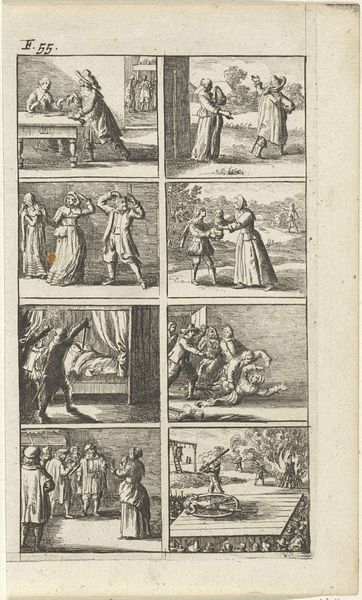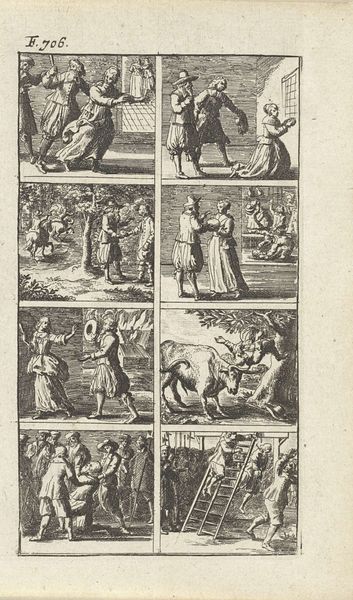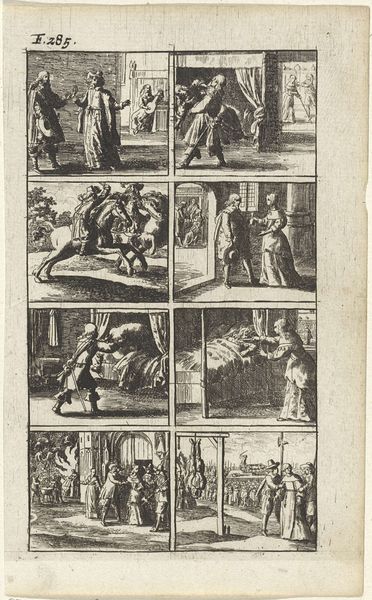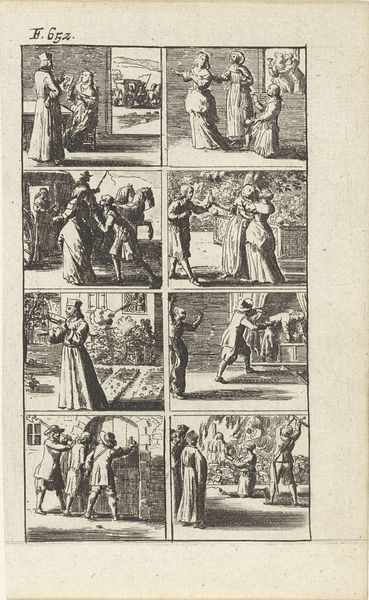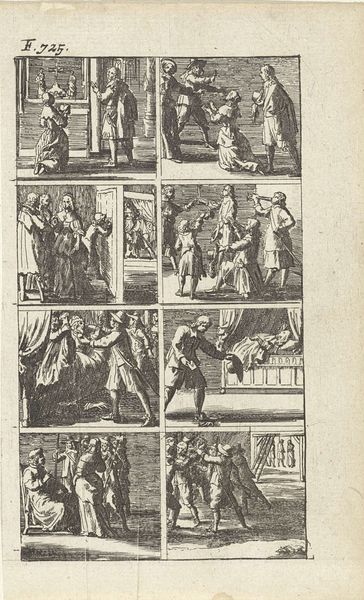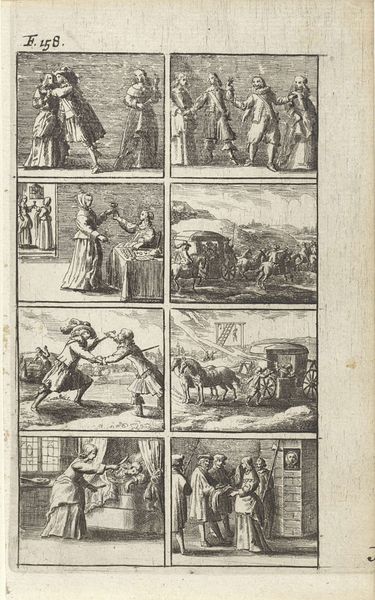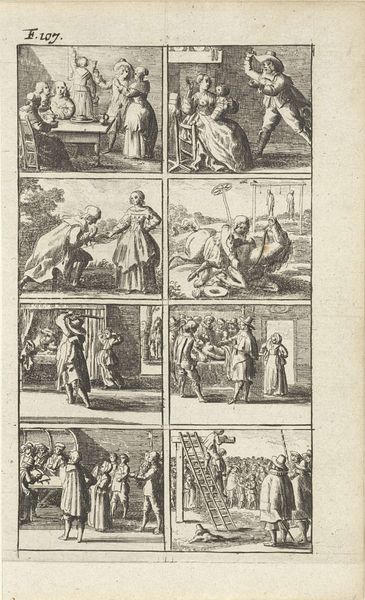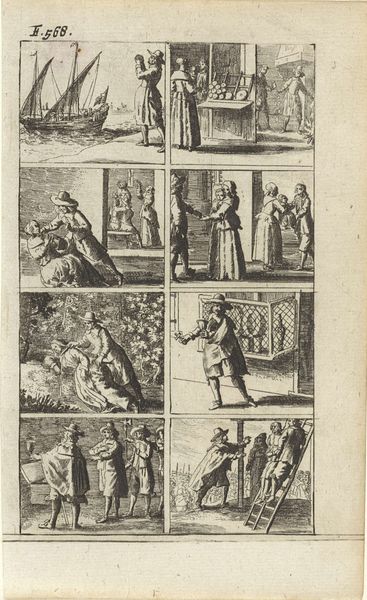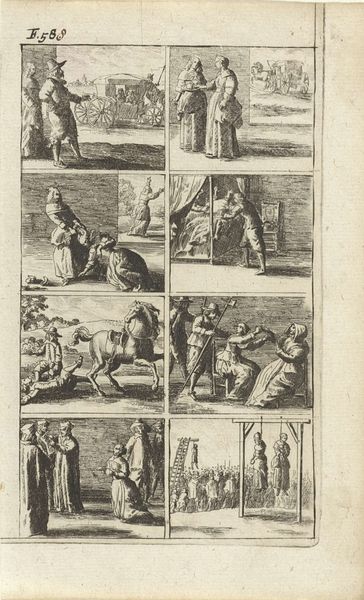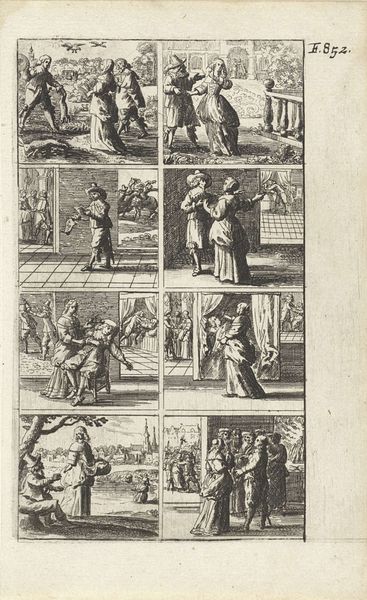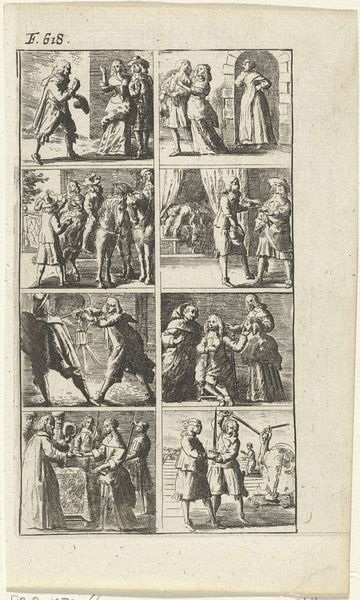
Verhaal met voorstellingen van moord en doodstraf (F. 361.) 1667
0:00
0:00
print, engraving
#
narrative-art
#
baroque
#
dutch-golden-age
# print
#
figuration
#
line
#
history-painting
#
engraving
Dimensions: height 155 mm, width 94 mm
Copyright: Rijks Museum: Open Domain
Editor: Here we have Abraham Dircksz. Santvoort’s engraving, "Verhaal met voorstellingen van moord en doodstraf (F. 361.)" from 1667. It looks like a comic strip, depicting scenes of… well, murder and punishment, I guess! I’m struck by how public everything seems to be. What stands out to you in terms of its historical context? Curator: That public aspect is key. Consider this work within the context of the Dutch Golden Age. Public executions and trials were a form of civic spectacle and social control. The print medium made such images widely accessible, extending the reach of legal and moral authority beyond the immediate event. The printing press becomes a tool for reinforcing acceptable behaviours by depicting transgressions. Does that prompt anything for you? Editor: I guess it normalizes those harsh punishments and sends a warning: step out of line, and everyone will know. So, Santvoort's not just documenting; he’s participating in that reinforcement through imagery? Curator: Precisely. The composition, breaking the narrative into distinct panels, reflects a methodical process akin to legal proceedings. But consider the ethics. Who decided what's included, and who benefits from viewing such graphic scenes? Editor: Good point. The artist is framing someone else’s tragedy to create a very saleable narrative about authority. So the act of observation itself becomes political. Curator: Absolutely. This engraving serves as both a historical record and a statement about power dynamics within 17th-century Dutch society. Think about how such images would have been disseminated and understood by different social classes. The museum, in choosing to exhibit this print today, performs another intervention. What does that mean for the audience? Editor: That’s something I’ll definitely think about more when considering Dutch Golden Age art. Thank you for sharing your insights! Curator: And thank you, this was very helpful!
Comments
No comments
Be the first to comment and join the conversation on the ultimate creative platform.
